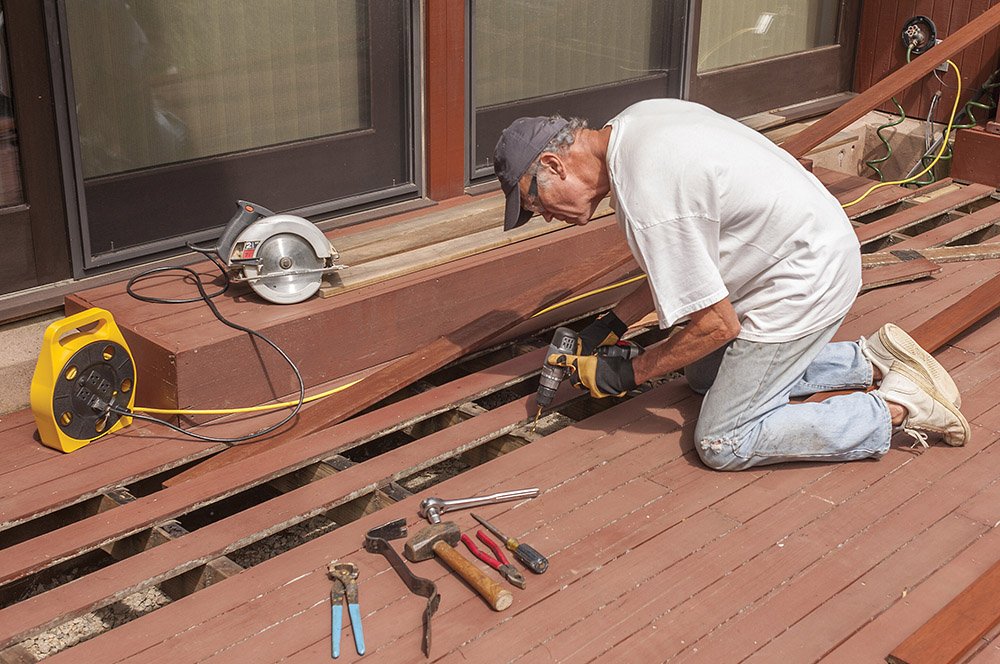Camp Administration 101: For Smoother Operations
Preventative-maintenance plans and procedures will help extend the life of facilities
By Jason Schaitz
Whether you own and operate your camp facilities or have a user-group agreement, you have the responsibility to ensure facilities are safe and stand the test of time. Maintaining these facilities properly is the key to making sure this happens. Unfortunately, it is common for user groups or organizations to have inadequate budgets to provide sufficient, ongoing maintenance to meet the anticipated lifespan of the facilities, causing them to become unsightly and rundown quicker than expected. Most of these concepts can be applied to indoor and outdoor facilities. Regardless of budget, there are ways to help extend longevity.
© Can Stock Photo / Babar760
1. Have a plan. A preventative-maintenance plan is essential to keeping up with facility use. It should include all maintenance duties, the time each one takes, the person responsible, and the frequency of each duty.
2. Prioritize tasks. Maintenance is time-consuming and can be expensive. To prioritize tasks, use the following guidelines:
Liabilities and hazards. Anytime one of these is identified within a facility, it should be addressed immediately. If you cannot accomplish the task in a timely manner, close off the area so no one can approach it.
Mandates. If there is a mandate from the city, county, or higher-up in an organization, attend to those items next to ensure compliance.
Preventative maintenance. After rectifying liabilities and mandates, return to the preventative-maintenance plan.
3. Provide the necessary tools. If you are asking volunteers or front-line staff members to assist in maintaininga facility, give them the tools they need to succeed. Make sure they have access to cleaning supplies, mops, brooms, and basic tools. They don’t need access to any large equipment or machinery, but the basics will go a long way to ensure they are able to contribute to daily maintenance.
4. Seek additional training. Most camp employees are not facility experts, but that does not mean they have to be clueless as to how facilities should be maintained. Look for training opportunities online or in the area to gain basic knowledge of how to properly maintain a facility.
5. Train user groups and volunteers. If you are the owner/operator of a facility, take it upon yourself to train user groups on basic maintenance. Attend their board meetings or put material together they can reference when using your facilities. If you are the user group, make sure this information reaches staff members or volunteers on-site. Make it a point to address this before every program. Those groups that aren’t trained can do more harm than good.
© Can Stock Photo / mihalec
Tips For Success
1. Have an opening and closing checklist. During camp, there should be clear processes and expectations for opening and closing facilities daily. Sometimes this can be a great deal for staff members to remember. Have a checklist of everything that needs to be put away, cleaned, and maintained after opening and prior to closing the facility. Have staff members or volunteers sign off on each task. Rotate duties among staff members each week so all will play an equal part in maintaining the facility.
2. Establish a procedure to report maintenance issues. Once an issue is reported, tackle it immediately. Putting it on the back burner may open the door for the problem to get worse or be forgotten. If the maintenance issue is a liability hazard, secure the area right away.
3. Have guidelines in place for wet surfaces and inclement weather. Rain can tear up green spaces. If a play area is too wet, it poses a safety issue for campers and will also turn a green space into mud. All that water and mud may then get dragged through indoor facilities. Be diligent in watching the weather and keep campers inside during adverse conditions to avoid unnecessary tasks.
4. Clean up and organize after every activity. Removing trash, cleaning tables and play areas, putting away equipment, keeping up with craft supplies, and organizing storage areas are essential in the upkeep of facilities. It will not take long for maintenance and cleanliness issues to arise if these chores are not done multiple times throughout the day. Counselors and campers should know they cannot leave an area to go to the next activity until their area is clean and equipment is organized. Make this a habit from day one, and operations will run much smoother.
5. Develop off-season maintenance tasks and procedures each year. This is the time to review facility needs after the wear and tear of the season. Don’t take this time for granted as the next camp will be here before you know it. After camp, have an off-season plan in place, along with an equitable timeline to ensure everything is completed.
Take preventative maintenance seriously while training, educating, and supervising staff members, volunteers, and user groups. Plans and procedures will go a long way in maintaining the longevity of facilities on any budget.
Jason Schaitz is a Parks and Recreation Director with 15 years’ experience managing camps and recreation programs. He also created and manages www.thesummercampsource.com with the goal of providing free resources for any type of camp, afterschool, or childcare program. Take your camp to the next level by visiting The Summer Camp Source and check out the Camp App, Camp Resources, Camp News, and Camp Administration 101 educational series.




